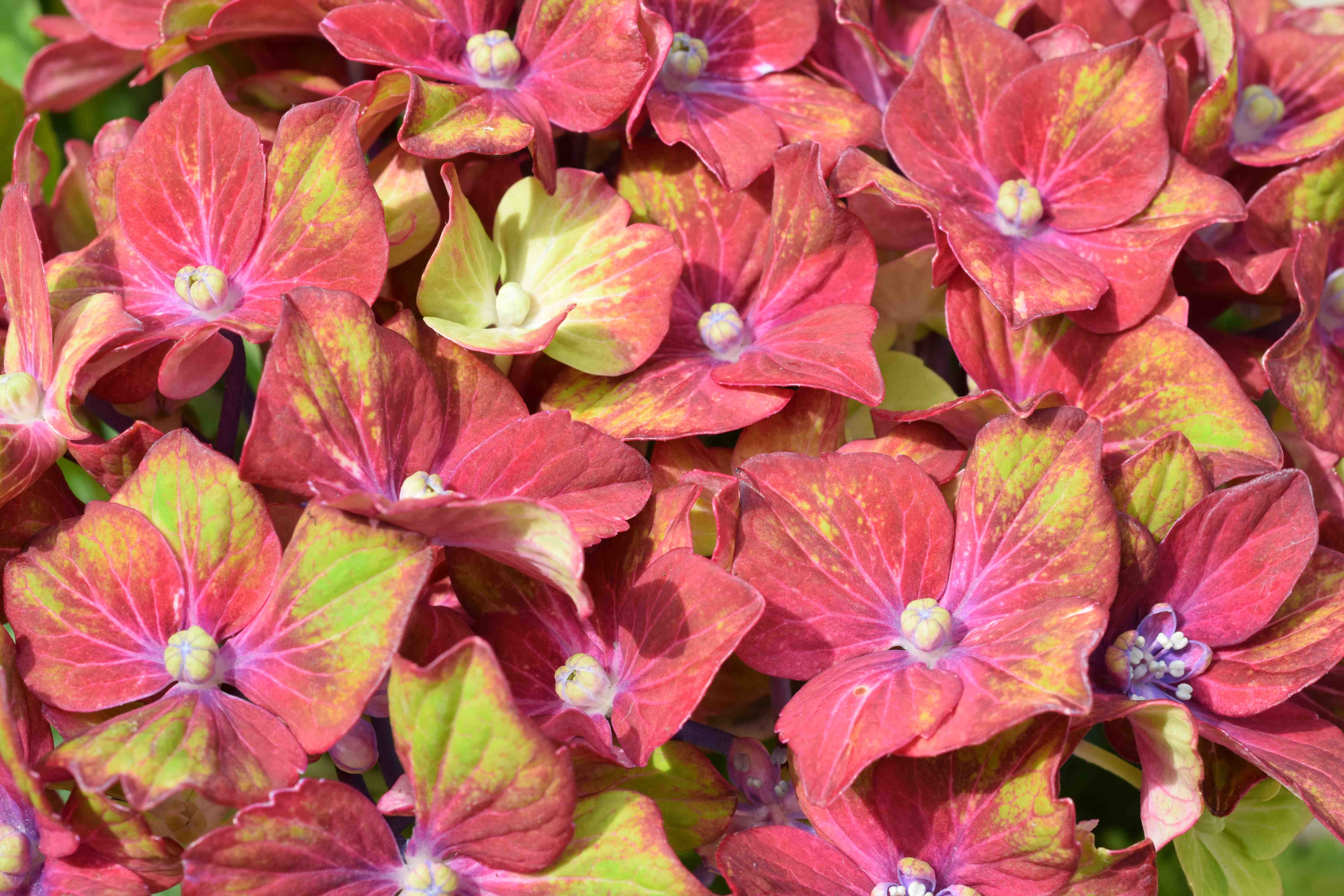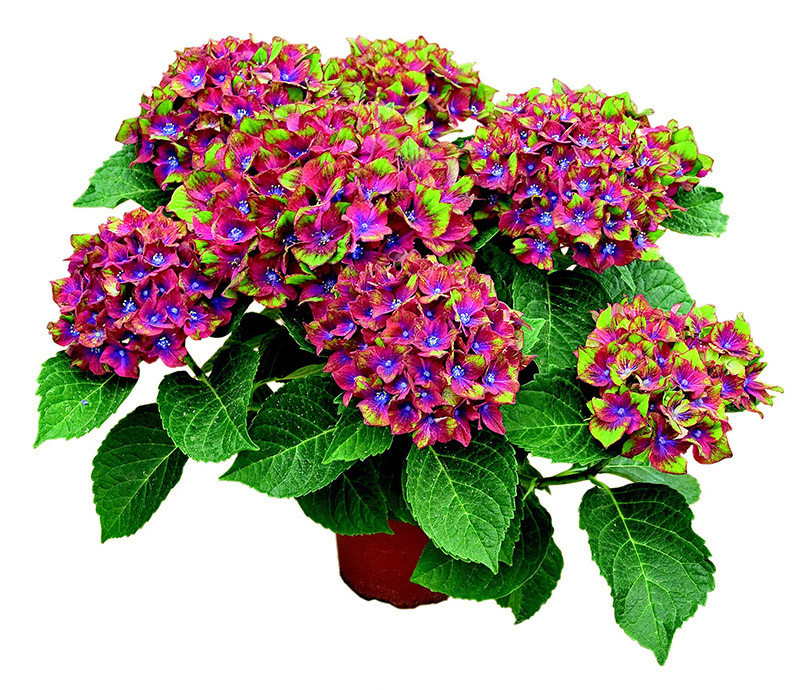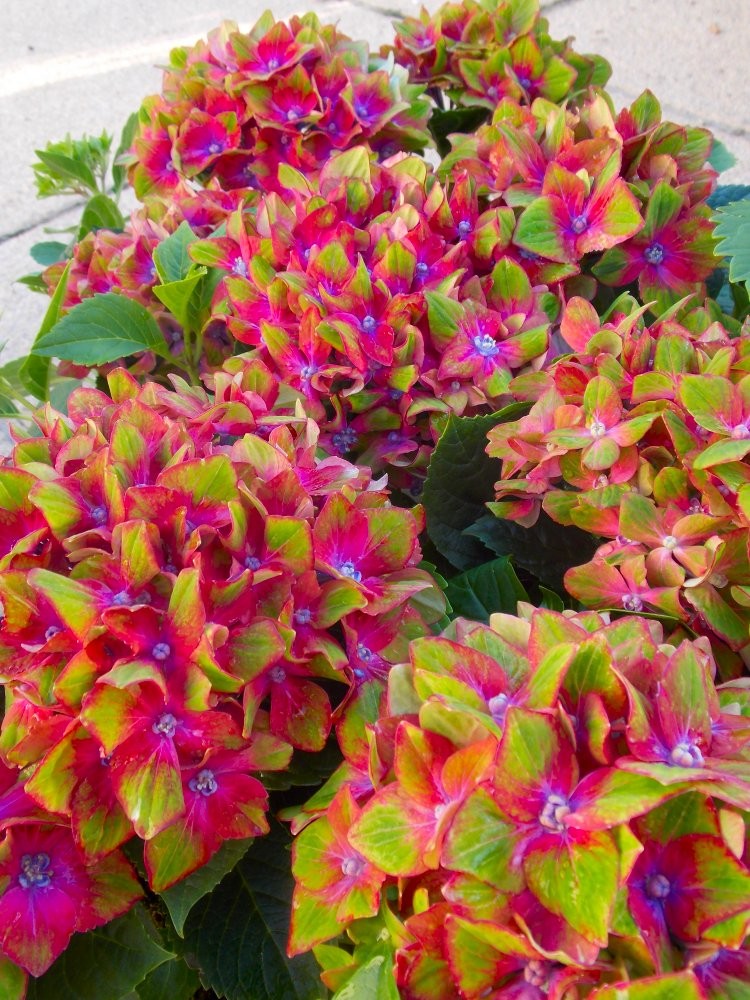Introducing Hydrangea Schloss Wackerbarth: The Hydrangea That's Taking The World By Storm
Hydrangea Schloss Wackerbarth is a relatively new variety of hydrangea that has quickly become one of the most popular choices for gardeners around the world. This stunning plant is known for its unique three-color blooms, which can range from green to pink to blue, depending on the soil pH. Hydrangea Schloss Wackerbarth is also a relatively easy plant to care for, making it a great choice for even beginner gardeners.
In this blog post, we will take a closer look at Hydrangea Schloss Wackerbarth, including its history, unique features, and care requirements. We will also provide some tips on how to get the best blooms from your plant.
History of Hydrangea Schloss Wackerbarth
Hydrangea Schloss Wackerbarth was first discovered in Germany in 2014. It is a seedling of the popular hydrangea variety, Hydrangea macrophylla. The plant was named after Schloss Wackerbarth, a historic castle in Saxony, Germany.
Unique Features of Hydrangea Schloss Wackerbarth
The most distinctive feature of Hydrangea Schloss Wackerbarth is its three-color blooms. The flowers start out as a light green color, then gradually transition to pink, and finally to blue. The color of the flowers is determined by the acidity of the soil. In acidic soil, the flowers will be blue. In neutral soil, the flowers will be pink. In alkaline soil, the flowers will be green.
In addition to its colorful blooms, Hydrangea Schloss Wackerbarth is also known for its large, showy flower heads. The flowers can grow up to 12 inches in diameter. The plant also has dark green, glossy leaves that add to its beauty.
Care Requirements for Hydrangea Schloss Wackerbarth
Hydrangea Schloss Wackerbarth is a relatively easy plant to care for. It prefers moist, well-drained soil and partial shade. The plant should be watered regularly, especially during hot, dry weather. Hydrangea Schloss Wackerbarth is also a heavy feeder, so it should be fertilized every few weeks during the growing season.
To get the best blooms from your Hydrangea Schloss Wackerbarth, it is important to fertilize it with a fertilizer that is high in phosphorus. You can also add sulfur to the soil to help the flowers turn blue.
Hydrangea Schloss Wackerbarth is a beautiful and easy-care plant that is sure to add a touch of elegance to any garden. If you are looking for a hydrangea that is different from the rest, then Hydrangea Schloss Wackerbarth is the perfect choice for you.
If you're looking for a hydrangea with a truly unique and eye-catching bloom, then the Hydrangea Schloss Wackerbarth is the perfect choice for you. This stunning variety features large, globular flowers that start out a delicate green, then gradually fade to a vibrant pink as they mature. In the center of each flower, you'll find a beautiful blue eye that adds a touch of elegance to the overall display.
The Hydrangea Schloss Wackerbarth is a relatively new variety, but it's quickly gaining popularity among gardeners and landscapers alike. It's a compact shrub that grows to about 3 feet tall and wide, making it ideal for smaller gardens. It's also relatively easy to care for, thriving in moist, well-drained soil and partial shade.
If you're interested in learning more about the Hydrangea Schloss Wackerbarth, I encourage you to visit . This website has a wealth of information about this amazing plant, including its history, care requirements, and more. You can also find photos of the flower in its various stages of bloom, so you can see for yourself just how stunning it is.
FAQ of hydrangea schloss wackerbarth
- When does Hydrangea Schloss Wackerbarth bloom?
Hydrangea Schloss Wackerbarth blooms in late spring to early summer. The flowers are large and showy, and can be white, pink, or blue.
- What is the life cycle of Hydrangea Schloss Wackerbarth?
Hydrangea Schloss Wackerbarth is a long-lived shrub, sometimes living for up to 50 years if properly cared for. It is a deciduous shrub, meaning that it loses its leaves in the fall.
- What are the ideal growing conditions for Hydrangea Schloss Wackerbarth?
Hydrangea Schloss Wackerbarth prefers full sun to partial shade and moist, well-drained soil. It is tolerant of a wide range of pH levels, but does best in slightly acidic soil.
- How do I care for Hydrangea Schloss Wackerbarth?
Hydrangea Schloss Wackerbarth is relatively easy to care for. Water it regularly, especially during the hot summer months. Fertilize it in the spring with a balanced fertilizer. Prune it in the early spring, before new growth begins.
- What are some common pests and diseases that affect Hydrangea Schloss Wackerbarth?
The most common pests that affect Hydrangea Schloss Wackerbarth are aphids, spider mites, and scale. The most common diseases that affect Hydrangea Schloss Wackerbarth are leaf spot, powdery mildew, and rust.
Image of hydrangea schloss wackerbarth
- Image 1: A close-up of a hydrangea schloss wackerbarth flower head. The flowers are a deep pink color with green streaks and tips.

- Image 2: A full shot of a hydrangea schloss wackerbarth shrub. The shrub is covered in pink flowers and has dark green leaves.

- Image 3: A hydrangea schloss wackerbarth flower head next to a blue hydrangea flower head. The pink and blue flowers contrast each other nicely.

- Image 4: A hydrangea schloss wackerbarth shrub in full bloom. The shrub is covered in pink flowers and is surrounded by green foliage.

- Image 5: A hydrangea schloss wackerbarth flower head in a vase. The flower head is still in bloom and has a beautiful pink color.

Post a Comment for "Introducing Hydrangea Schloss Wackerbarth: The Hydrangea That's Taking The World By Storm"